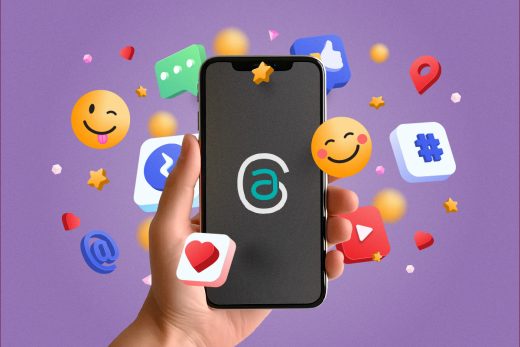Let’s be honest—how many videos have you watched today? No judgment. We’re all in the same boat. Reels, TikToks, Shorts...

“Twitter-killer” or Passing Phase?
While Elon Musk was preparing to challenge Mark Zuckerberg to a cage fight, the Meta CEO was creating something that may prove to be a knockout punch to Twitter.
Threads, the so-called “Twitter-killer,” launched earlier this month, quickly became the fastest app to one million users, and then became the fastest to 100 million. And while its future may be uncertain, Threads is definitely worth some attention in the near term. Here’s an overview of the platform, why it has had such a meteoric rise, what might be on the horizon, and how brands should respond.

What is Threads?
Threads is a microblogging platform that’s a lot like Twitter. In effect, it’s not a standalone app so much as a companion to Instagram. However, it’s primarily text focused, although users can upload photos and videos.
Why is it so popular?
The quick adoption of Threads is primarily a tribute to its integration with Instagram. Instead of other microblogging apps that mimic Twitter, like Mastodon and Bluesky, users don’t have to start from scratch in terms of building a follower base. To get started on the app, you just input a bio, add a photo, and confirm whether you want to follow the same accounts you follow on Instagram. The app fills your feed with content from popular accounts so you’re off and running pretty quickly.
The popularity of Threads is also somewhat related to how unpopular Twitter has become since Musk took ownership of the platform. Policy changes, a rise in divisive speech, and other controversial decisions have caused a mass defection of Twitter users and advertisers. Threads isn’t the only landing spot for those defectors, but it’s undoubtedly been the biggest beneficiary.
What’s next for Threads?
Threads is still in its infancy, so changes will undoubtedly be coming. One of the top priorities for Meta is likely monetization of the platform, largely in terms of advertising options. In addition, the simplicity of threads is likely the result of its quick rollout more than premeditated minimalism, and more features will likely be added. Twitter is also threatening lawsuits that may hinder the growth of Threads–or even its very existence, although that’s unlikely.
It’s also important to note that we’ve seen other social media platforms launch with a lot of promise and fizzle out not too long after. from Google Plus to Clubhouse, there’s no shortage of “here today, gone tomorrow” stories. In addition, the novelty of Threads may wear off after users tire of talking about…well, the novelty of Threads. However, the power of Meta’s purse is a unique advantage and Threads may prove too big to fail.
What should brands do?
It’s important to not overreact to the launch of new platforms and risk hindering higher priority efforts, but Threads is definitely an outlier. For now, brands should claim their username, populate a profile, share an initial post so there’s something for users to see, and keep a close eye on the platform. Right now a lot of attention is migrating from other social media apps to Threads, so even only as a short-term play, it’s better to be accessible on Threads than absent. What to do next will depend upon what features Threads rolls out to help brands reach their customers. The big question over time, as always, will be whether Threads will be relevant long-term to your customers, prospects, and other stakeholders. If so, then it will likely be relevant to your brand, too.
More of our thoughts
Culture isn’t something written on a wall — it’s something you feel the moment you walk through our doors or jump on a call with our team.
The A-Team headed southwest to attend the Restaurant Leadership Conference and join industry leaders from across the country.


